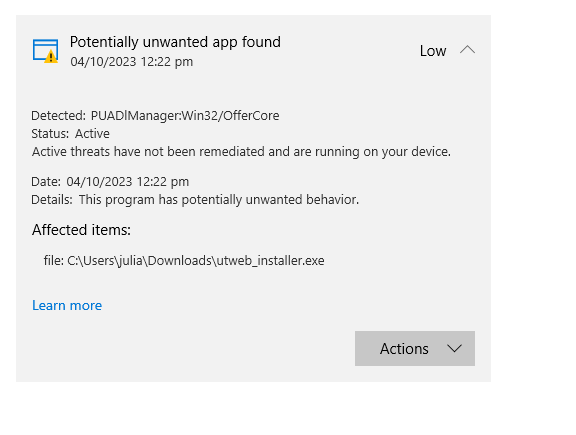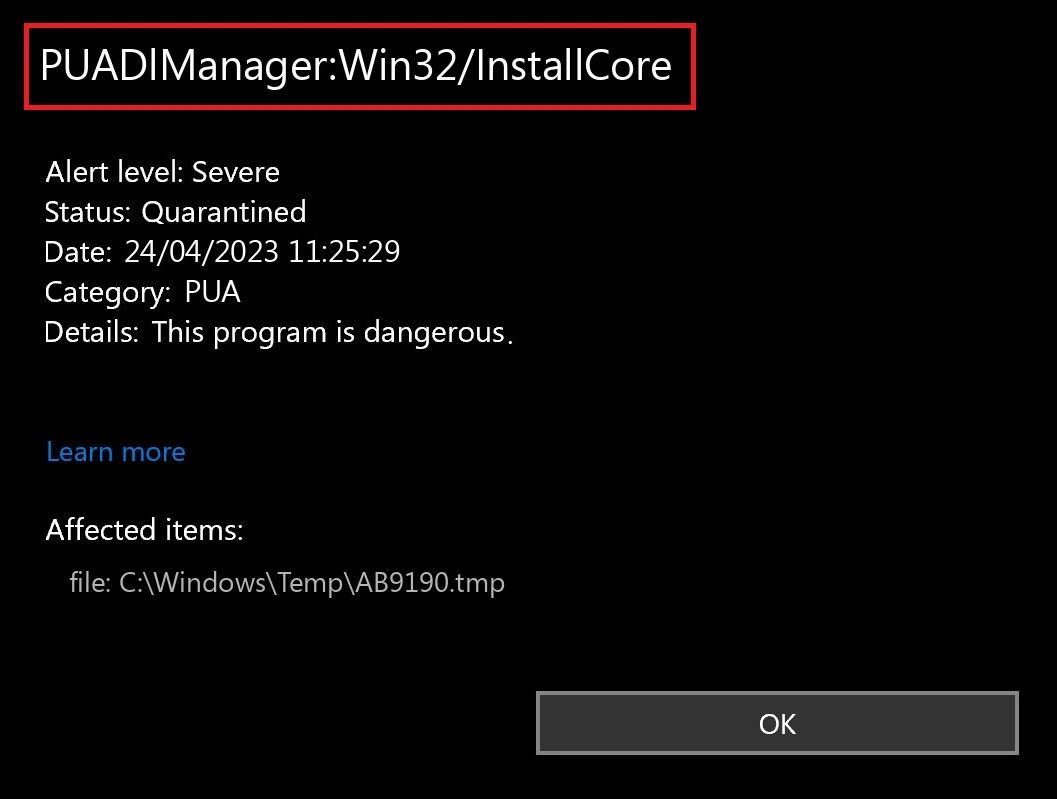Has your computer become slow, or are you seeing unexpected ads? You might have PUADlManager on your system, an unwanted program that can be harmful.
This program can cause privacy risks, a slower system, and increased threat exposure. Worse, it often installs itself without asking, making it a suspicious activity on your device.
Fortunately, you can solve these problems. In this article, I’ll answer PUADlManager, its effects, and most importantly, the steps to safely remove it so that you can enjoy a smooth, ad-free computing experience.
What is PUADlManagerWin32OfferCore?

PUADlManagerWin32OfferCore is a potentially unwanted program (PUP) identified as a trojan.
Microsoft Defender may continuously scan and ensure the removal of a file associated with this program, but it may remain hidden on your PC.
Some common steps to remove it include performing an offline scan using a third-party malware detection/removal tool and manually deleting its components from your computer’s file system.
It’s critical to reinforce that potentially unwanted programs (PUPs) and trojans can represent serious security risks. They can come bundled with other software or through deceptive download links.
Therefore, regularly scanning your system with reliable security tools is always a good idea, and be careful when downloading or installing new software from unreliable third-party sites.
Is PUADIManager dangerous?
Yes, PUADIManager can indeed be dangerous. Classified as a potentially unwanted program (PUP) and recognized as a trojan, PUADIManager can pose significant security risks to your system.
Users on platforms like Reddit have discussed their experiences with this software, often mentioning challenges in complete removal, which can lead to continuous security risks. Microsoft Security has listed it as a potential threat under the category ‘PUA: Win32/Presenoker‘, and various web resources guide users on removing it.
So, while PUADIManager might not always seem dangerous in terms of immediate effects, it’s important to consider long-term risks.
Malware like this can lead to data theft, system performance issues, and other severe concerns. Therefore, if you’ve identified PUADIManager on your computer, immediate actions for its removal would be advisable.
What damage can PUADIManager cause?
Here are some long-term damage PUADIManager can cause:
- System Degradation: Malware, like the PUADIManager, often uses system resources to perform malicious activities. This could cause system lag and an overall decrease in performance.
- Unauthorized Access: Like other trojans, it could allow unauthorized access to your system.
- Data Theft: It may collect personal and sensitive data, including banking information and passwords.
- Additional Malware: It could download and install additional malware onto your system, causing further harm.
To avoid such risks, it’s advisable to follow steps to remove the malware as outlined in this post.
Note: Always ensure you have a reliable antivirus program installed and updated to the latest version, and be careful when downloading or installing new software from third-party sites.
How to Remove PUADlManagerWin32OfferCore?

Let’s walk through the steps to remove PUADlManagerWin32OfferCore from your system –
Step 1: Uninstall PUADlManagerWin32OfferCore from the Control Panel
- Open the Control Panel on your PC. You can do this by searching for “Control Panel” in the search bar located in your taskbar.
- In the Control Panel, locate and click on Programs and then Uninstall a program.
- Look through the list of installed programs for PUADlManagerWin32OfferCore or any other suspicious programs.
- If found, click on the program and then click on Uninstall. Follow the prompts to complete the uninstallation.
Step 2: Reset your Browsers
PUADlManagerWin32OfferCore may have installed browser extensions. You can reset your browsers to their default settings to ensure these are removed. You can find instructions on how to reset most browsers to their default settings below:
Step 3: Scan with Anti-Malware Tools
Use a trusted anti-malware software solution to scan your system and remove PUADlManagerWin32OfferCore. Tools like Malwarebytes and Avast Antivirus are recommended to help detect and remove PUADlManagerWin32OfferCore.
After you’ve installed your chosen software, run a scan on your device and remove any detected malware.
Step 4: Perform a Final Scan
To ensure all traces of PUADlManagerWin32OfferCore are removed from your system, perform a final scan with either of these 10 antivirus programs.
Will removing PUADIManager affect my computer?
Removing PUADlManager from your computer should not have any negative effects, provided you follow the recommended steps for its removal. This is because PUADlManager is classified as potentially unwanted software or a Trojan, which does not benefit your system.
On the contrary, leaving it on your computer might have various adverse effects. PUADlManager can slow down your computer, display unwanted advertisements, and potentially lead to more malicious software being installed.
Removing this threat involves uninstalling associated programs from Windows, resetting browsers to their default settings, and using reputable antimalware programs to scan for and remove the Trojan.
Remember to follow the uninstallation steps carefully. If the instructions are not followed correctly, you might leave residual files or settings behind, causing problems.
However, mistakingly deleting necessary system files or settings while trying to remove the Trojan could potentially cause issues. Therefore, using proven antimalware software is highly recommended to deal with this threat safely and effectively.
Final Thoughts
It’s clear that PUADlManager is not the software you want on your system. It can cause problems and expose you to security risks.
Removing it is crucial for your digital security and a better user experience. You can regain control and enjoy a safer digital environment by using trusted anti-malware tools and following our removal guide.



